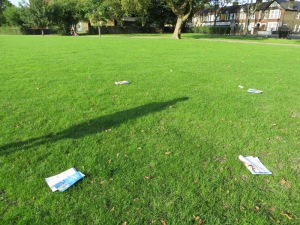Curators at the British Museum have dubbed the discovery of Mag Henge in Central Park a defining moment in British archaeological research, and a “discovery of national significance”.
The monument, which consists of four Newham magazines arranged in a near-perfect trapezoid, is believed to have dated from early to mid-September 2015.

Researchers at the site are hesitant to say more about the monument until more analysis is done, but are understandably excited.
Alan, an archaeologist who was involved in the discovery said “It’s unbelievable. It’s possibly the biggest discovery of our generation. But finding the monument is only the start. There are so many questions to answer. How were humans not only able to transport four magazines into the park, but also place them in such a pattern? Why did they do it? And what function did it serve? There’s only one thing we can say for sure right now, and that’s that in the period early to mid September 2015, humans were capable of complex thought and had the technology to create such a monument”.
For now, the monument is a mystery, but East Ham residents are already speculating on its purpose. Popular suggestions include that the monument was in fact a creche, a music venue, or – like Stone Henge – an early recycling centre.
[…] incident comes only a week after the discovery of “Newham Mag Henge” in the same […]
LikeLike